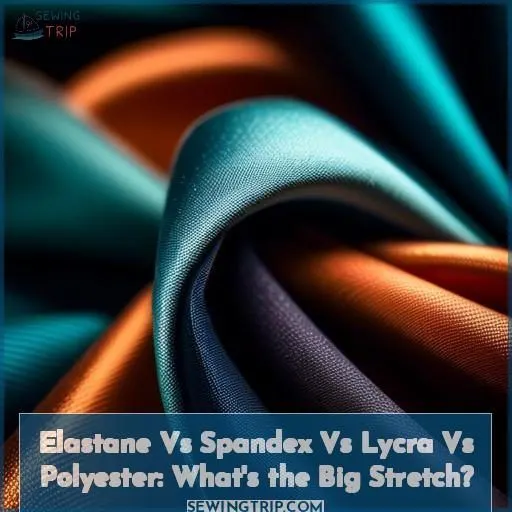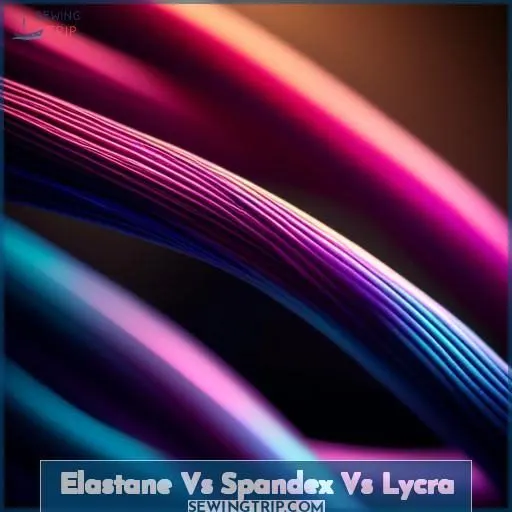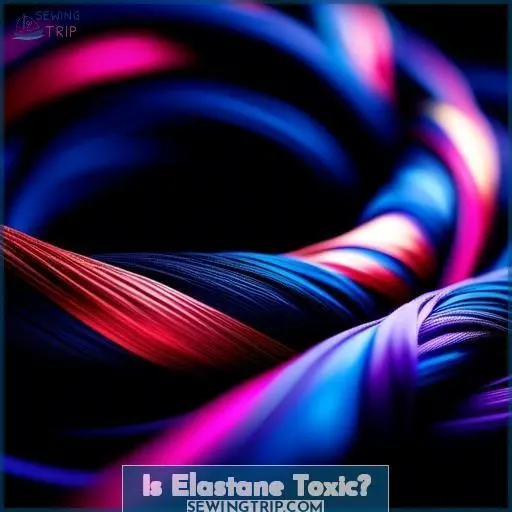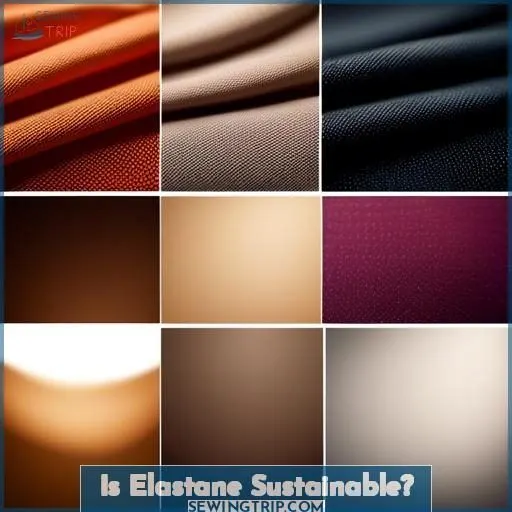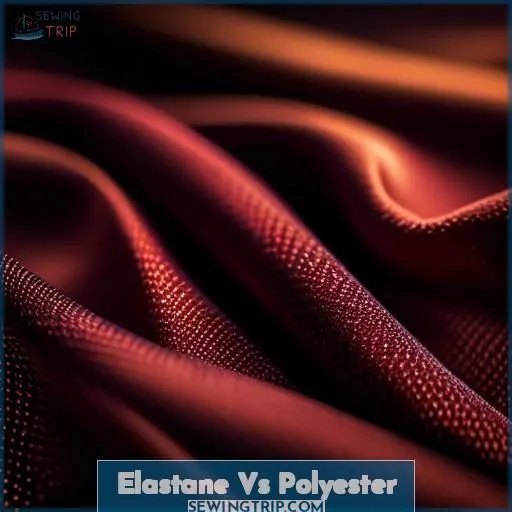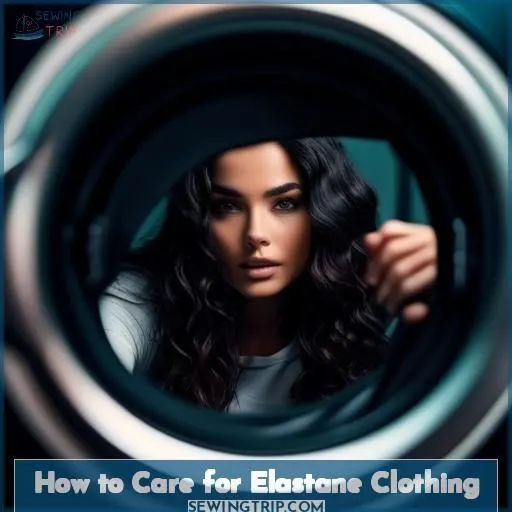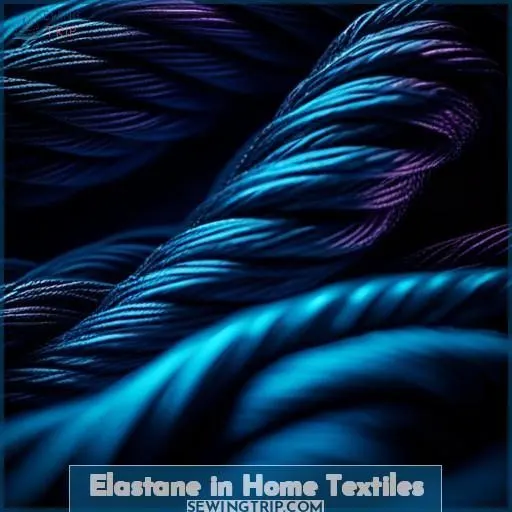This site is supported by our readers. We may earn a commission, at no cost to you, if you purchase through links.
You’re wondering about the differences between elastane, spandex, Lycra, and polyester.
Elastane, spandex, and Lycra are the same material – a synthetic fiber known for its exceptional stretch and recovery. It’s composed of polyurethane and polyethylene glycol.
Polyester is a durable, wrinkle-resistant fabric that doesn’t have the same stretchy properties. When blended with elastane, polyester gains comfort and flexibility.
Understanding their unique characteristics is key for choosing the right material for your needs – from activewear to medical garments and beyond. Let’s explore the nuances of elastane vs spandex vs Lycra vs polyester in more detail.
Table Of Contents
Key Takeaways
- Elastane, spandex, and Lycra are interchangeable terms referring to the same synthetic material.
- Elastane is known for its exceptional elasticity, durability, and lightweight properties.
- Elastane is not considered sustainable due to its manufacturing process and non-biodegradable nature.
- Elastane is used in various applications, including activewear, medical devices, and industrial products.
Elastane Vs Spandex Vs Lycra
Elastane, spandex, and lycra are interchangeable terms referring to the same synthetic material.
The material comprises 85% polyurethane and polyethylene glycol.
It is known for its exceptional elasticity, durability, and lightweight properties.
While the terms may vary depending on the brand or region, they all refer to the same material.
For example, lycra is a brand name for elastane.
Spandex is an anagram of the word expands.
Elastane Properties
Elastane, a synthetic fiber known as polyether-polyurea copolymer, is a versatile and elastic material used in a variety of applications. Composed of 85% polyurethane and polyethylene glycol, it’s a petroleum-based polymer that has been in use since the 1950s. Elastane is commonly used in clothing, particularly in activewear and sportswear, due to its ability to stretch up to 500% of its original length and return to its original shape. It’s also found in 80% of garments worn in America and is known for its durability, lightweight nature, and resistance to damage.
Elastane is also used in medical and industrial applications, such as in medical devices and industrial products like belts and hoses. In home textiles, it’s used in bedding and upholstery, providing comfort and support. Despite its widespread use, elastane isn’t considered sustainable, as its manufacturing process consumes energy and water, and it’s made from synthetic fibers and toxic chemicals. However, there are efforts to create more sustainable versions of elastane, such as those made from recycled materials and plant-based materials.
Elastane is interchangeable with spandex and Lycra, with Lycra being a brand name for elastane. While spandex and elastane have the same properties, the terms are used differently in different regions, with spandex being more common in North America and elastane in Europe.
Elastane is generally considered safe to wear, but it isn’t breathable and can be sensitive to high temperatures. It’s also not biodegradable and can contribute to landfill waste. To care for elastane clothing, it’s recommended to wash in cool water and air-dry or use a low-temperature setting on a dryer.
Is Elastane Toxic?
Elastane, also known as spandex or Lycra, is a synthetic material with both health and environmental risks.
It’s made from polyurethane, a petroleum-based polymer, and polyethylene glycol, and can stretch up to 500% its original length.
While elastane is found in 80% of garments worn in America, it isn’t sustainable. The manufacturing process consumes energy and water, and the material is made from synthetic fibers and toxic chemicals. Polyurethane is a potential human carcinogen, and isocyanates, used in the production of polyurethane, are linked to respiratory issues.
Additionally, elastane isn’t biodegradable and ends up in landfills.
However, research is being conducted to recycle elastane, such as the development of a tool to measure the amount of elastane present in a garment, and a method to remove elastane completely from nylon.
Alternatives to elastane include recycled elastane yarn from fabric waste, LYCRA® EcoMade, and LYCRA® T400® EcoMade, which use recycled PET bottles and renewable plant materials.
Is Elastane Sustainable?
Elastane, a synthetic fiber known for its exceptional elasticity, isn’t the most sustainable material.
Its manufacturing process consumes energy and water. It’s made from synthetic fibers and toxic chemicals like polyurethane, which is a potential human carcinogen. Isocyanates, used in the production of polyurethane, have been linked with respiratory issues.
Additionally, elastane isn’t biodegradable and ends up in landfills.
However, there are efforts to make elastane more sustainable. For instance, there are initiatives to recycle elastane yarn from fabric waste and use recycled PET bottles and renewable plant materials in the production of elastane.
Elastane Vs Polyester
When you’re caught in the tug-of-war between elastane and polyester, remember it’s all about the stretch factor and what suits your groove. Here’s the lowdown:
- Elastane Yarn brings the bounce back in your step, offering that coveted elastane stretch that makes every move feel like a dance.
- Polyester might play it cool with durability and ease of care, but it lacks the personal touch of elastane’s hug-your-body fit.
- Elastane Blends marry the best of both worlds, ensuring your clothes aren’t just durable but also have that stretchy embrace.
How to Care for Elastane Clothing
To care for your elastane clothing, follow these tips:
- Washing: Use a gentle cycle with cold or warm water. Avoid using fabric softener, as it can damage elastane’s ability to stretch and wick away moisture.
- Drying: Air-dry elastane garments whenever possible. If you must use a dryer, choose a low heat setting to prevent damage.
- Storage: Store elastane clothing in a cool, dark place away from direct sunlight. Hang garments on thick hangers with rounded muslin-covered polyester batting to prevent stretching.
Elastane in Medical Applications
Elastane’s stretchy properties make it a popular choice in medical applications.
From medical bandages that provide support and comfort to surgical gowns that allow for a full range of motion, elastane fibers are a staple in healthcare settings.
Elastane medical slings and gloves offer durability and resistance to damage, ensuring the safety of patients and healthcare workers alike.
Spandex and polyurethane, the main components of elastane, contribute to its elasticity and strength, making it an ideal choice for medical equipment and garments.
Whether it’s a surgical mask that needs to fit snugly or a medical gown that needs to withstand the rigors of daily use, elastane’s synthetic fibers are a reliable choice for medical applications.
Elastane in Industrial Applications
Elastane is a synthetic fiber that has become a staple in various industrial applications, including the automotive, footwear, construction, aerospace, and furniture industries. Its unique properties, such as resistance to oils and durability, make it a popular choice for these industries. However, its production process consumes energy and water, and it’s made from synthetic fibers and toxic chemicals, which raises concerns about its sustainability.
In the automotive industry, elastane is used in the production of seat belts and airbags due to its high tensile strength and ability to stretch and return to its original shape. In footwear, elastane is used in the production of athletic shoes, providing a comfortable and secure fit. In construction, elastane is used in the production of flexible hoses and seals, offering resistance to damage from sewing. In aerospace, elastane is used in the production of flexible components in aircraft, providing resistance to fatigue and damage. In furniture, elastane is used in the production of flexible seating and upholstery, providing comfort and durability.
While elastane isn’t sustainable in its current form, there are efforts being made to create more sustainable versions of the material. For example, recycled elastane yarn from fabric waste is being used, as well as pre-consumer spandex waste being used in the production of new elastane products. Additionally, there are plans to create elastane from cane sugar or sugar beets, which would make the material more sustainable.
Elastane in Home Textiles
Just as elastane has revolutionized the industrial world, it’s making waves in home textiles too. Imagine your bedding stretching to fit snugly, your upholstery bouncing back from a nap, and curtains that drape just right. Here’s how elastane is cozying up your living space:
- Elastane in bedding makes sure your sheets never look slept in.
- Elastane in upholstery keeps your favorite couch looking sharp.
- Elastane in curtains adds that perfect flow, making your windows the eye candy of your home décor.
This stretchy fabric isn’t just about comfort; it’s about bringing a touch of resilience and elegance to every corner of your home.
Conclusion
Stretching standards, elastane, spandex, Lycra, and polyester possess perplexing properties perfect for prolific pursuits. Your choice between these fabrics for activewear, medical garments, or home textiles hinges on considering elastane vs spandex vs lycra vs polyester’s stretchiness, sustainability, and specialized strengths. Select shrewdly; superior solutions stretch performance possibilities.

